Dental Amalgam Filling Replacement
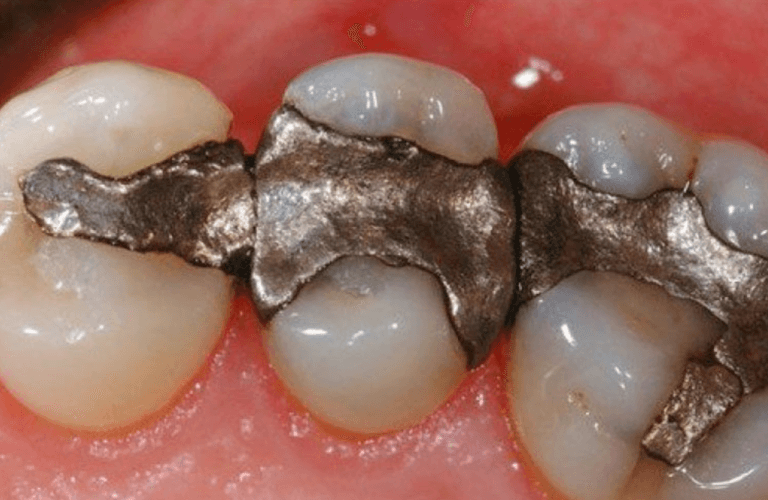
What Is Dental Amalgam Filling Replacement?
Dental Amalgam Filling Replacement is a common dental procedure aimed at replacing existing amalgam fillings in a patient’s teeth with alternative dental filling materials. Amalgam fillings, also known as silver fillings, have been widely used for decades to treat cavities and restore damaged teeth. These fillings consist of a combination of metals, including silver, tin, copper, and mercury. While they have been effective in providing durable restorations, concerns have arisen regarding the mercury content in dental amalgam and its potential impact on overall health.
With growing awareness about dental health and safety, many patients are opting for amalgam filling replacement as a proactive measure to enhance their oral well-being. This procedure involves the careful removal of existing amalgam fillings and replacing them with other dental materials that are deemed more biocompatible and aesthetically pleasing. Before you deciding on whether Dental Amalgam Filling Replacement are right for you, there are some things you should know:
- What Is A Dental Amalgam Filling?
- Are Dental Amalgam Fillings Safe?
- Who Needs Dental Amalgam Filling Replacement?
- What Are The Advantages Of Dental Amalgam Filling Replacement?
- What Are The Different Types Of Amalgam Filling Alternatives?
- How Much Does Dental Amalgam Filling Replacement Cost?
- What Are The Steps In The Dental Amalgam Filling Replacement Procedure?
- Can I Have A Dental Amalgam Filling Replacement If I Am Pregnant?
- How Long Does Dental Amalgam Filling Replacement Last?
- What Are Common Problems with Dental Amalgam Filling Replacement?
If you have any further questions about Dental Amalgam Filling Replacement or other dental services offered at Atlas Dental, please contact us.

Free phone consultation
Have questions about dental amalgam replacement? Schedule a free phone consultation with our Toronto dentist.

5 star google reviews
Our patients love us! See for yourself why more and more people are choosing Atlas Dental for their dental fillings.

Book Emergency tooth filling
Do you think you have a tooth filling emergency and need an appointment? Book an emergency tooth filling online.
What Is A Dental Amalgam Filling?
Dental amalgam filling, commonly known as a “silver filling,” is a type of dental restorative material used to treat cavities or tooth decay. It has been used in dentistry for over a century and is known for its durability and effectiveness in restoring the function and structure of decayed teeth.
Dental amalgam is a mixture of several metallic elements, primarily silver, tin, copper, and mercury. The combination of these metals forms a stable and durable alloy that can withstand the forces of chewing and biting. The inclusion of mercury in dental amalgam is a topic of debate in some circles due to concerns about potential mercury exposure. However, it’s essential to note that dental amalgam has been extensively studied and approved for use in dentistry by reputable health organizations like the American Dental Association (ADA) and the Canadian Dental Association (CDA).
Dental amalgam fillings are known for their strength and durability, making them particularly suitable for use in molars and other teeth subjected to heavy chewing forces. Additionally, amalgam fillings have been a cost-effective and time-tested option for restoring teeth with cavities for many years.
However, advancements in dental materials have led to the development of alternative filling materials, such as composite resin, porcelain, and glass ionomer, which are tooth-colored and blend more naturally with the appearance of natural teeth. These alternatives have gained popularity due to their aesthetic benefits and the minimal use of metals. Patients now have more choices when it comes to selecting a suitable dental filling material based on their individual preferences, dental needs, and concerns about mercury exposure. If you have further questions about Dental Amalgam Fillings, please contact us.
Are Dental Amalgam Fillings Safe?
As of my last update in September 2021, dental amalgam fillings have been deemed safe for use in dentistry by reputable health organizations, including the American Dental Association (ADA) and Canadian Dental Association (CDA).
However, the safety of dental amalgam fillings has been a subject of debate and concern in certain circles due to the presence of mercury in the amalgam mixture. Dental amalgam is a combination of various metals, with the primary constituents being silver, tin, copper, and approximately 50% mercury by weight. The mercury in dental amalgam is chemically bound to the other metals, forming a stable alloy. When used in dental fillings, dental amalgam releases a small amount of mercury vapor, which is absorbed and eliminated by the body. The vast majority of scientific research and clinical studies conducted over many decades have indicated that the amount of mercury exposure from dental amalgam fillings is well below levels considered harmful to human health.
The ADA, WHO, and FDA, among other health organizations, have conducted extensive reviews of available scientific evidence and have consistently concluded that dental amalgam fillings are safe for use in dental restorations for most patients, including children and pregnant women. The FDA’s position is that dental amalgam fillings present no significant health risk to the general population, but they have recommended certain precautions for specific populations, such as pregnant women and individuals with certain health conditions.
Despite the generally accepted safety of dental amalgam fillings, some patients may have individual concerns or preferences about the use of mercury in dental restorations. In such cases, patients can discuss alternative dental filling materials with their dentists, such as composite resin, porcelain, or glass ionomer, which are tooth-colored and do not contain mercury.
Ultimately, the decision regarding the use of dental amalgam fillings or alternative materials should be made in consultation with a qualified dental professional. Dentists are trained to consider the individual’s oral health needs, preferences, and any specific health considerations when recommending dental restorations. If you have further questions about the safety of Dental Amalgam Fillings, please contact us.
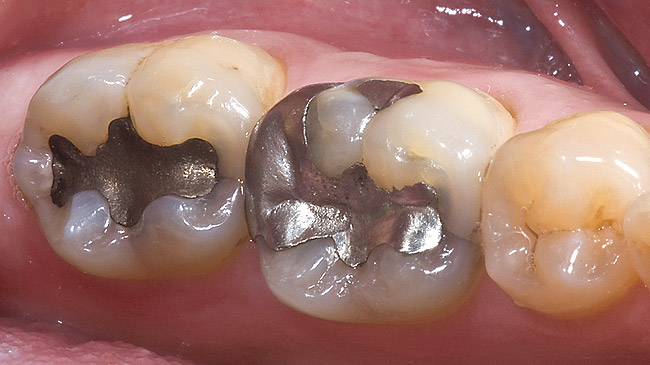
Who Needs Dental Amalgam Filling Replacement?
Dental amalgam filling replacement is a consideration for several groups of individuals, each with their unique reasons and dental health goals. If you currently have dental amalgam fillings or are considering them as a treatment option, the following scenarios might indicate that you could benefit from dental amalgam filling replacement:
- Concerns about Mercury Content: One of the primary reasons individuals seek amalgam filling replacement is due to concerns about the mercury content in traditional amalgam fillings. While dental amalgam has been deemed safe for most people by various health organizations, some patients prefer to minimize their exposure to mercury. If you are worried about the potential health implications associated with mercury, discussing amalgam filling replacement with your dentist may provide peace of mind.
- Aesthetic Reasons: Amalgam fillings are known for their distinct silver color, which can be quite noticeable when you smile or laugh. For those who prioritize a more natural appearance, replacing amalgam fillings with tooth-colored alternatives can offer a significant cosmetic enhancement. Tooth-colored fillings, such as composite resin, can be matched to the shade of your natural teeth, creating a seamless and attractive smile.
- Allergic Reactions or Sensitivities: In rare cases, some individuals may experience allergic reactions or sensitivities to the metals used in amalgam fillings. Allergic responses could manifest as oral discomfort, inflammation, or other adverse reactions. If you suspect that you might be sensitive to amalgam materials, consulting your dentist about alternative filling options is essential for your oral health and overall well-being.
- Wear or Deterioration of Existing Fillings: Over time, dental amalgam fillings can experience wear and tear, potentially leading to fractures, leaks, or deterioration. Regular dental check-ups can help identify any issues with existing fillings. If your dentist recommends replacing aged or compromised amalgam fillings, it is crucial to consider the available alternatives that best suit your dental needs.
- Upgrading to Modern Dental Materials: With advancements in dental technology, there is now a wide array of dental materials available that offer improved durability and biocompatibility. Some patients may opt for amalgam filling replacement to upgrade their dental restorations to more modern materials, enhancing their oral health and overall dental experience.
- Comprehensive Dental Restoration: In cases where a patient requires extensive dental restorations due to multiple cavities or damaged teeth, amalgam filling replacement can be part of a broader treatment plan. By replacing old amalgam fillings during comprehensive dental restoration, patients can achieve better long-term dental health outcomes.
Regardless of the reasons behind considering dental amalgam filling replacement, it is crucial to consult with a qualified and experienced dentist. A dental professional will evaluate your unique dental situation, discuss the available options, and recommend the most suitable course of action to meet your dental health goals. Remember that proactive dental care and open communication with your dentist play pivotal roles in maintaining a healthy and radiant smile. If you have further questions about Dental Amalgam Filling Replacement, please contact us.
What Are The Advantages Of Dental Amalgam Filling Replacement?
Dental amalgam filling replacement offers numerous advantages, addressing concerns related to traditional amalgam fillings and providing patients with improved dental health and enhanced overall well-being. Let’s explore the key benefits of opting for dental amalgam filling replacement:
- Reduced Exposure to Mercury: One of the primary benefits of dental amalgam filling replacement is the reduction of exposure to mercury. While dental amalgam has been used safely in dentistry for many years, some patients may prefer to minimize their exposure to mercury due to personal health beliefs or concerns. By replacing amalgam fillings with alternative materials, patients can alleviate worries about potential mercury-related health implications.
- Aesthetic Enhancement: Amalgam fillings are known for their conspicuous silver color, which can be visibly distinct from the natural color of teeth. Dental amalgam filling replacement with tooth-colored materials, such as composite resin or porcelain, offers a significant aesthetic enhancement. These materials can be precisely matched to the shade of natural teeth, resulting in a seamless and natural-looking smile.
- Biocompatibility and Allergy Considerations: Some individuals may experience allergies or sensitivities to the metals used in dental amalgam. Dental amalgam filling replacement allows for the use of alternative materials that are better tolerated by those with metal sensitivities. Modern dental materials, such as composite resin or ceramics, are generally more biocompatible, reducing the risk of adverse reactions.
- Enhanced Bonding and Preservation of Tooth Structure: Amalgam fillings require more extensive tooth preparation, as they require undercuts in the tooth structure to mechanically lock in place. On the other hand, tooth-colored materials used in dental amalgam filling replacement, like composite resin, bond directly to the tooth surface. This bonding process enables more conservative tooth preparation, preserving more of the natural tooth structure.
- Improved Durability and Longevity: Tooth-colored materials used in dental amalgam filling replacement have seen significant advancements in durability over the years. With proper care and maintenance, tooth-colored fillings can offer excellent longevity and withstand the forces of regular chewing and biting. This means patients can enjoy their dental restorations for an extended period, reducing the need for frequent replacements.
- Minimized Risk of Fractures and Leaks: Over time, dental amalgam fillings may experience wear and tear, potentially leading to fractures or leaks that can compromise the tooth’s integrity. Dental amalgam filling replacement with modern materials reduces the risk of such issues, contributing to the long-term stability and health of the treated teeth.
- Environmentally Friendly Choice: Dental amalgam contains mercury, which raises environmental concerns when it comes to its disposal. By choosing dental amalgam filling replacement with alternative materials, patients can make a more environmentally friendly choice, as tooth-colored materials typically do not contain mercury.
In conclusion, dental amalgam filling replacement offers a range of benefits that cater to patients’ preferences, health concerns, and aesthetic desires. From reducing exposure to mercury to providing a natural-looking smile and improved durability, this procedure has become a popular option for those seeking enhanced dental health and overall oral well-being. Before making any decisions, it is essential to consult with a qualified dentist who can assess your unique dental needs and guide you in selecting the most suitable dental filling materials for your individual case. Remember, prioritizing proactive dental care can pave the way to a bright and confident smile. If you have further questions about Dental Amalgam Filling Replacement, please contact us.
What Are The Different Types Of Amalgam Filling Alternatives?
There are a wide variety of tooth filling materials for the cosmetic dentist to choose from, including composite resin fillings, resin-modified glass ionomer fillings, inlays, and temporary fillings. Each material has its advantages and disadvantages. It is up to the skilled dentist to select the material that best meets your oral health goals. Some of these include:
Composite Resin Fillings
Composite resin fillings, also known as white fillings, are composite materials made up of microscopic glass-like particles trapped in a plastic-like matrix. It is white in color, strong and is the modern dentist’s go-to favorite in most permanent tooth filling situations that require strength and high aesthetics. Composite tooth fillings require a moisture-free environment to be successful at the time of dental treatment.
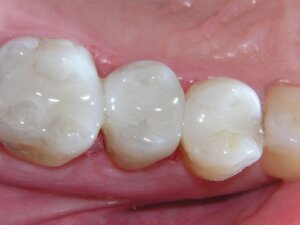
Resin-Modified Glass Ionomer
Resin modified glass ionomer (RMGI) is a hybrid of powdered glass ionomers and composite resin fillings. It is also a permanent white filling and is often used in low-stress areas of the tooth and in areas where there is a high chance of future cavities. The chief benefit of RMGI dental fillings is that it forms strong ionic bonds with minerals in the prepared tooth surface, and it releases fluoride, which will strengthen teeth and prevent dental decay.
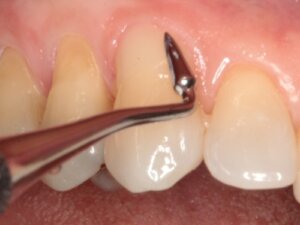
Inlays
Inlays, also known as gold fillings or porcelain fillings, are permanent indirect filling materials made by a dental laboratory and cemented into place by your Toronto dentist. Inlays are sometimes used in modern dental care, but for a number of reasons have fallen out of favor:
- Inlays require two dental appointments instead of one
- Inlays are more expensive because a lab fee is required
- Inlays rarely have any superior features over modern direct tooth filling materials, like silver filling, plastic resin, or RMGI.
Many patients go with their dentists’ recommendations for direct filling materials, or if necessary, dental crowns.
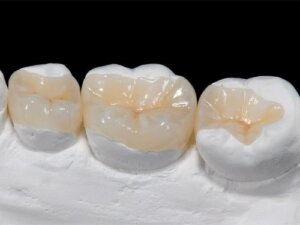
Dental Crowns
Dental Crowns are often used there is extensive tooth damage or larger cavities. These crowns cover the entire tooth surface and provide comprehensive protection and restoration. They offer full coverage and protection for severely damaged or weakened teeth and are designed to match the natural color of surrounding teeth, ensuring an aesthetically pleasing result.
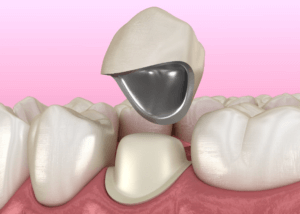
Each amalgam filling alternative comes with its unique advantages and considerations. Your dentist will assess your specific dental needs and discuss the most suitable filling material for your individual case. Factors such as the location of the filling, the size of the restoration, and your aesthetic preferences will be taken into account to ensure that your dental health and smile are enhanced effectively and beautifully. Remember, proactive dental care and regular dental check-ups are key to maintaining the longevity of your dental restorations, regardless of the type of filling material used. If you have further questions about Dental Amalgam Filling Replacement, please contact us.
Cost of Dental Amalgam Filling Replacement
The cost of a dental amalgam filling replacement is the same price as a new dental filling.
Whether it is an amalgam filling, composite resin filling, or glass ionomer filling, the cost of any of these Dental Fillings are similar and will depend on the location of the tooth (anterior, bicuspid or molar), as well as the size of the filling, which is translated as the number of “surfaces” involved. Imagine each tooth as a 5 surface box. Each “surface” that gets incorporated will dictate the size (and overall cost) of the tooth filling. Therefore, the cost of a filling can range between $200-460. The codes relevant to dental fillings in the Ontario Dental Association’s Suggested Fee Guide appear as follows:
Permanent Anteriors:
- 23111 – One surface: $200
- 23112 – Two surfaces: $250
- 23113 – Three surfaces: $300
- 23114 – Four surfaces: $370
- 23115 – Five surfaces (maximum surfaces per tooth): $390
Permanent Bicuspids:
- 23311 – One surface: $220
- 23312 – Two surfaces: $275
- 23313 – Three surfaces: $330
- 23314 – Four surfaces: $400
- 23315 – Five surfaces or maximum surfaces per tooth: $420
Permanent Molars:
- 23321 – One surface: $240
- 23322 – Two surfaces: $300
- 23323 – Three surfaces: $360
- 23324 – Four surfaces: $440
- 23325 – Five surfaces or maximum surfaces per tooth: $460
Dental Fillings are considered a basic service under all dental insurance plans and should be covered to your maximum insurable limit, but be sure to find out from your dental insurance plan provider how much you are eligible for before going ahead with dental treatment. Our fees are consistent with the ODA Fee Guide.
For patients without dental insurance, Atlas Dental is pleased to offer dental financing through Dentalcard. Affordable payment plans start at 7.95% for terms of 6 months to 6 years. To learn more about Dentalcard dental treatment financing, follow this link.
What Are The Steps In The Dental Amalgam Filling Replacement Procedure?
The dental amalgam filling replacement procedure involves several careful and precise steps to ensure the successful removal of existing amalgam fillings and the placement of alternative dental materials. Here is an overview of the typical steps involved in the dental amalgam filling replacement procedure:
- Comprehensive Dental Examination: The process begins with a comprehensive dental examination by your dentist. During this examination, your dentist will assess the condition of your existing amalgam fillings, check for any signs of wear, cracks, or leaks, and evaluate the overall health of your teeth and gums. X-rays or other diagnostic tools may be used to gather detailed information about your dental structures.
- Treatment Planning: Based on the examination findings, your dentist will discuss the need for amalgam filling replacement and recommend suitable alternative dental materials. The treatment plan will take into consideration your oral health goals, aesthetic preferences, and any other specific concerns you may have. Please review these pre-operative instructions before your visit.
- Local Anesthesia: Before the procedure begins, your dentist will administer local anesthesia to numb the area around the tooth being treated. Local anesthesia ensures that you remain comfortable and pain-free throughout the filling removal and replacement process.
- Isolation of the Tooth: To protect the rest of your mouth from debris and to ensure a dry operating field, a dental dam or rubber dam may be placed around the tooth undergoing treatment. This thin sheet of rubber isolates the tooth, keeping it dry and free from saliva during the procedure.
- Amalgam Filling Removal: Using specialized dental instruments, your dentist will carefully remove the existing amalgam filling. During this step, extra precautions are taken to minimize mercury exposure and prevent any particles from being swallowed or inhaled. High-speed suction and dental dam isolation are used to control and capture any debris.
- Tooth Preparation: After the amalgam filling is completely removed, the tooth is prepared for the placement of the alternative dental filling material. The preparation process varies depending on the chosen material. For composite resin fillings, for example, the tooth is etched with a mild acidic solution to create a rough surface that helps with bonding.
- Placing the Alternative Filling Material: The prepared tooth is then filled with the chosen alternative dental material, such as composite resin, porcelain, or another suitable option. The material is carefully placed in layers and shaped to match the natural contours of the tooth.
- Curing or Hardening: If the chosen filling material requires curing or hardening, a special dental curing light is used to activate and set the material in place. This process ensures that the filling becomes strong and durable.
- Bite Adjustment and Polishing: After the filling material has been set, your dentist will check your bite to ensure proper alignment. Adjustments may be made to ensure a comfortable and even bite. The filling is then polished to achieve a smooth surface and natural appearance.
- Post-Procedure Care and Instructions: Your dentist will provide you with post-procedure care instructions to ensure proper healing and long-term success of the replacement filling. You may be advised to avoid chewing on the treated tooth for a short period and to follow good oral hygiene practices to maintain the health of your new dental restoration.
Dental amalgam filling replacement is a carefully orchestrated process that prioritizes patient safety and dental health. By following these steps with precision and expertise, your dentist can help you achieve a healthier, more aesthetically pleasing smile and a positive dental experience. As with any dental procedure, it is essential to follow your dentist’s instructions and attend regular dental check-ups to maintain your oral health over time. If you have further questions about Dental Amalgam Filling Replacement, please contact us.
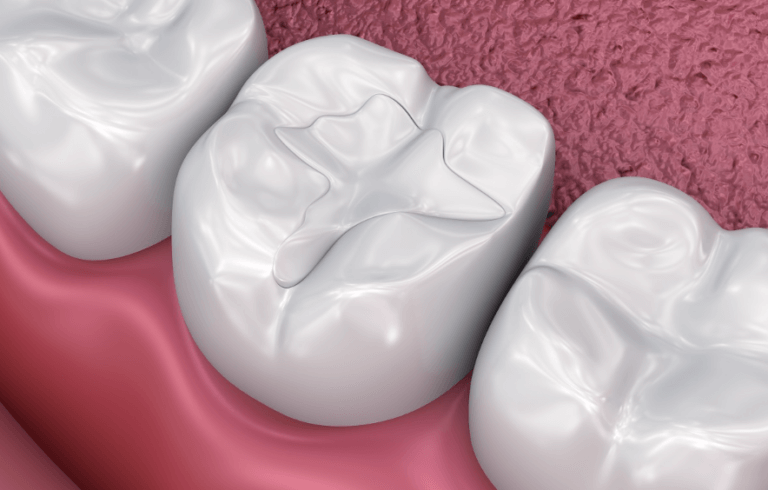
Can I Have A Dental Amalgam Filling Replacement If I Am Pregnant?
Dental amalgam filling replacement is a common dental procedure that involves the removal of existing amalgam fillings and their replacement with alternative dental materials. If you are pregnant and considering dental amalgam filling replacement, you may naturally have concerns about its safety during pregnancy. Let’s explore the considerations and guidelines regarding dental amalgam filling replacement during pregnancy:
- Timing of the Procedure: The American Dental Association (ADA) and the Canadian Dental Association (CDA) recommend that elective dental procedures, including dental amalgam filling replacement, should ideally be postponed during the first trimester of pregnancy. The first trimester is a critical period of fetal development, and it is prudent to avoid unnecessary procedures during this time.
- Essential Dental Treatment: If you require dental amalgam filling replacement for urgent or necessary dental reasons, it is generally considered safe to undergo the procedure during pregnancy, regardless of the trimester. Dental health is essential for both the mother’s well-being and the baby’s development, and untreated dental issues can potentially affect pregnancy outcomes.
- Consultation with Healthcare Providers: Before undergoing any dental procedure during pregnancy, including dental amalgam filling replacement, it is vital to inform both your dentist and obstetrician about your pregnancy. This ensures that both healthcare providers can work together to make informed decisions that prioritize both your dental health and the safety of your pregnancy.
- Mercury Vapor Exposure: During dental amalgam filling removal, there is a possibility of exposure to small amounts of mercury vapor. While the levels of exposure are generally considered to be low, it is essential to take precautions to minimize any potential risk. Dentists typically follow safety protocols, such as using a dental dam, high-speed suction, and appropriate ventilation, to reduce the release of mercury vapor during the procedure.
- Alternative Filling Materials: If you are concerned about the mercury content in dental amalgam, discuss alternative filling materials with your dentist. Tooth-colored materials like composite resin or porcelain are popular choices for dental amalgam filling replacement and are generally considered safe during pregnancy.
- X-rays and Anesthesia: If dental X-rays are required as part of the dental amalgam filling replacement procedure, the use of lead aprons and thyroid collars can shield both the abdomen and thyroid area to minimize radiation exposure to the developing fetus. Additionally, local anesthesia used during the procedure is considered safe during pregnancy when administered in appropriate dosages.
- Postponing Elective Procedures: For non-urgent cosmetic procedures, such as replacing amalgam fillings for purely aesthetic reasons, it is generally best to wait until after pregnancy and breastfeeding to undergo the treatment.
While elective dental procedures like dental amalgam filling replacement should ideally be postponed during the first trimester of pregnancy, essential dental treatment, including necessary amalgam filling replacement, can be performed during pregnancy with appropriate precautions. Open communication with both your dentist and obstetrician is crucial in making well-informed decisions that prioritize both your dental health and the safety of your pregnancy. If you have any concerns or questions about dental procedures during pregnancy, do not hesitate to seek guidance from your healthcare providers. If you have further questions about Dental Amalgam Filling Replacement, please contact us.
How Long Does Dental Amalgam Filling Replacements Last?
The lifespan of a dental filling and how often it needs to be replaced can be influenced by various factors. Some of the key factors that affect the durability and longevity of dental fillings include:
- Type of Filling Material: Different filling materials have varying lifespans. For example, dental amalgam and gold fillings tend to be more durable and longer-lasting compared to composite resin fillings. Porcelain or ceramic fillings also offer excellent longevity, especially for larger restorations.
- Material Quality: The quality of the filling material and the skill of the dentist placing the filling play a significant role in its lifespan. High-quality materials and precise placement can result in more durable restorations.
- Tooth Condition: The overall health of the tooth being restored also affects the longevity of the filling. If a tooth has extensive damage or tooth decay, it may require additional dental treatment or support, such as a dental crown, to ensure the filling remains intact.
- Size and Location of the Filling: The size and location of the dental filling can affect its durability. Fillings in high-stress areas, such as molars used for chewing, may experience more wear and tear, potentially shortening their lifespan.
- Biting and Chewing Habits: Individuals who have habits like teeth grinding (bruxism) or clenching their jaws can put additional pressure on dental fillings, leading to premature wear and possible damage.
- Diet and Eating Habits: A diet high in sugary and acidic foods can increase the risk of tooth decay around the filling. Frequent consumption of such foods and beverages can compromise the integrity of the filling and the surrounding tooth structure.
- General Dental Care: Regular dental check-ups and teeth cleanings are crucial for monitoring the condition of dental fillings. Early detection of any issues allows for timely repairs or replacements, ensuring the filling’s longevity.
- Oral Hygiene Practices: Good oral hygiene is essential for the longevity of dental fillings. Regular brushing, flossing, and using mouthwash help prevent plaque buildup and reduce the risk of decay around the filling. Proper oral hygiene also prevents gum disease, which can impact the stability of fillings.
- Patient Habits and Lifestyle: Individual habits, such as using teeth as tools or nail-biting, can impact the lifespan of dental fillings. Additionally, lifestyle choices like smoking can affect the health of teeth and gums, potentially affecting the longevity of dental restorations.
- Trauma or Accidents: Trauma to the mouth, such as a sports injury or accident, can damage dental fillings and require replacement.
It’s essential to remember that dental fillings are not permanent restorations, and their lifespan can vary from person to person. Regular dental check-ups and open communication with your dentist will help ensure that your dental fillings remain in good condition, and any necessary replacements or repairs are done promptly to maintain your oral health. If you have further questions about Dental Amalgam Filling Replacement, please contact us.
Common Problems with Dental Amalgam Filling Replacement
Dental amalgam filling replacement is generally a safe and effective procedure, but like any dental treatment, it may present some challenges or issues for certain individuals. While the longevity and success of dental amalgam filling replacement are usually positive, a few common problems may arise. It’s essential to be aware of these potential concerns and work closely with your dentist to address them promptly. Here are some common problems associated with dental amalgam filling replacement:
- Tooth Sensitivity: After getting a new dental filling, some patients may experience temporary tooth sensitivity to hot or cold temperatures. This sensitivity typically subsides on its own within a few days to a couple of weeks. Using toothpaste formulated for sensitive teeth and avoiding extremely hot or cold foods can help alleviate discomfort during this time.
- Bite Misalignment: Occasionally, dental amalgam filling replacement may cause minor changes to your bite alignment. If you notice discomfort while biting down or if your teeth no longer meet correctly, it’s essential to contact your dentist promptly for an adjustment. A bite adjustment ensures that your teeth align properly, reducing the risk of unnecessary strain on the fillings and surrounding teeth.
- Fractures or Chipping: While modern dental materials used for filling replacement are durable, there is still a slight risk of fractures or chipping. This is more likely to occur if the filling is subjected to excessive biting forces or if you have habits like teeth grinding (bruxism). Using a mouthguard if you grind your teeth and avoiding chewing on hard objects can minimize this risk.
- Recurrent Decay: Although dental amalgam filling replacement is meant to address existing decay and restore the tooth, there is always a risk of new decay forming under the replacement filling if proper oral hygiene is not maintained. Regular brushing, flossing, and dental check-ups are crucial to prevent new cavities from forming around the new filling.
- Need for Additional Treatment: In some cases, a tooth may require more extensive treatment, such as a dental crown, if the damage or decay is significant. Your dentist will assess the condition of the tooth before the filling replacement procedure to determine the most appropriate treatment plan.
- Discoloration or Staining: Tooth-colored fillings, such as composite resin or porcelain, can be susceptible to staining over time, especially if you frequently consume staining substances like coffee, tea, or red wine. Maintaining good oral hygiene and avoiding excessive consumption of staining agents can help preserve the appearance of the fillings.
It’s crucial to remember that the success and longevity of dental amalgam filling replacement depend on multiple factors, including oral hygiene practices, dietary habits, lifestyle choices, and regular dental care. If you encounter any issues or concerns after getting dental amalgam filling replacement, promptly consult your dentist to address them and maintain the health and integrity of your dental restorations. With proper care and attention, dental amalgam filling replacement can provide a durable and aesthetically pleasing solution to restore your smile and support your oral health for years to come. If you have further questions about Dental Amalgam Filling Replacement, please contact us.
We also think you’ll like…
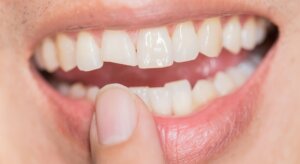
Chipped Tooth
Chipped Tooth What Is A Chipped Tooth? A chipped tooth is a common dental issue that occurs when a small portion of the tooth enamel
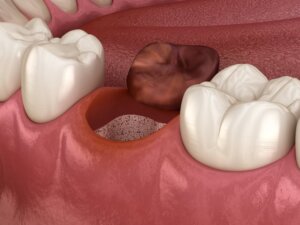
Dry Socket: Symptoms, Causes, Prevention & Treatment
Dry Socket: Symptoms, Causes, Prevention & Treatment What Is A Dry Socket? Dry socket is also called alveolar osteitis. After having regular tooth removal or

Myogenic Trismus Home Care Instructions
Myogenic Trismus Home Care Instructions What Is Trismus? When your jaw muscles become so tight that you have difficulty opening your mouth wide, you may
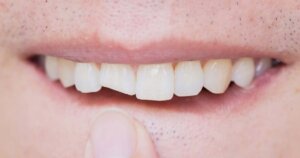
Missing or Loose Tooth Filling
How To Fix My Missing or Loose Tooth Filling What Causes A Tooth Filling To Fall Out? If a piece of your Tooth filling is
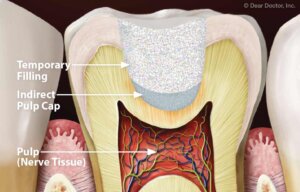
Indirect Pulp Capping
Indirect Pulp Capping What Is Indirect Pulp Capping? Your dental health is a crucial part of your overall well-being, and it’s essential to stay informed
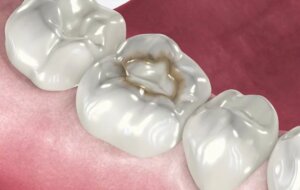
Cavity Under An Old Filling
A Cavity Under An Old Filling What Is A Cavity Under An Old Filling? If you have ever had a dental filling, you might assume

